Predict Customer Churn with AutoML in Zoho Analytics
- Last Updated : October 14, 2025
- 21.8K Views
- 5 Min Read
Worried about your customers leaving your business or unsubscribing? Not anymore! Customer churn poses a great challenge for businesses of all sizes. If not addressed on time, it can cause growth to plateau and profits to reduce. Studies by Bain and Company reveal that a 5% increase in customer retention increases profitability by 25%
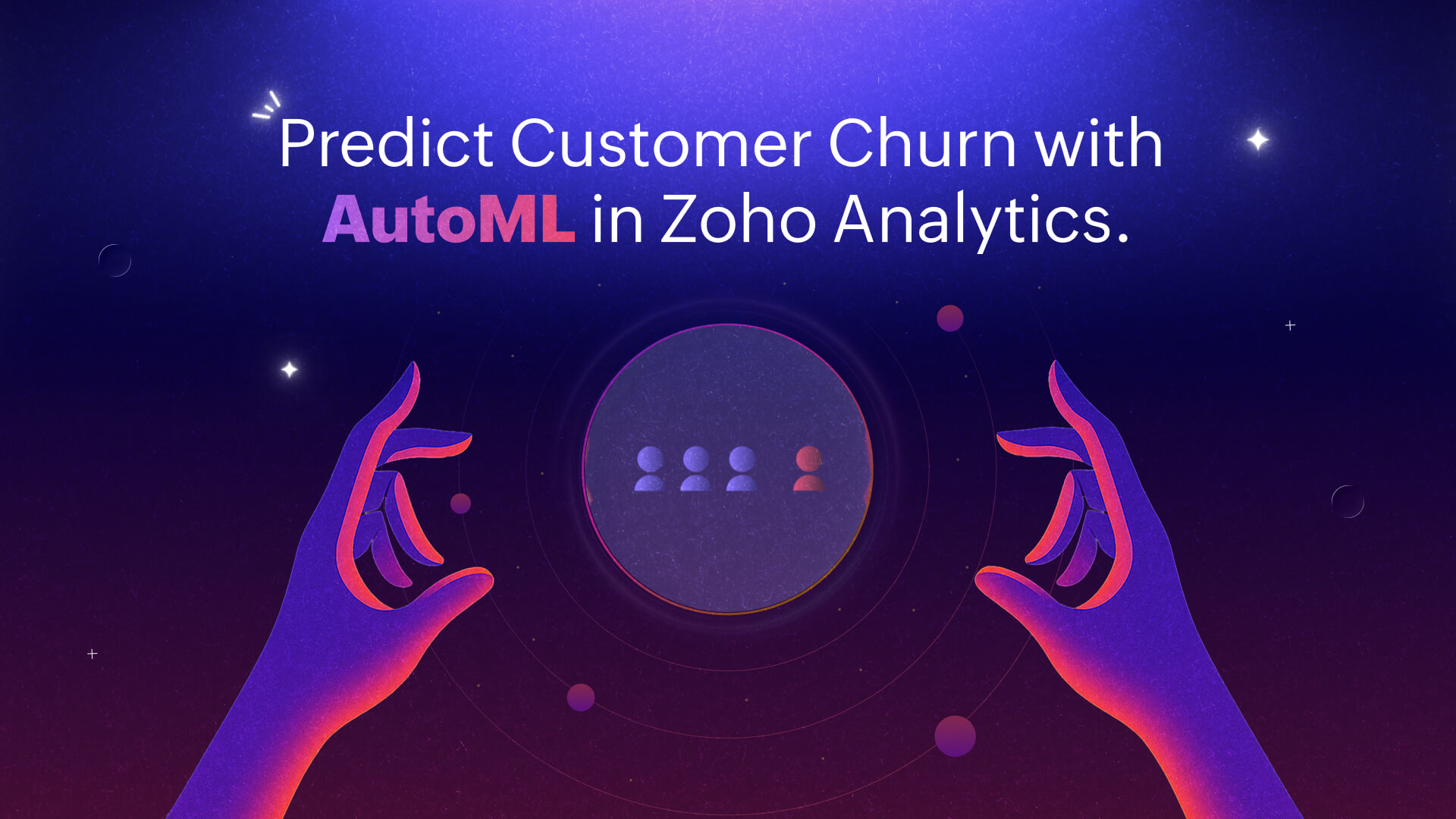
Understanding why customers leave and identifying who is likely to churn can make the difference between steady growth and stalled momentum. With Zoho Analytics’ AutoML capability, you can build a robust machine learning model that analyzes historical customer data, detects churn patterns, and accurately predicts which customers are at risk.
This solution focuses on how to build a churn prediction ML model suitable for your business requirements without writing a single line of code.
What is Customer Churn?
Customer churn is when businesses lose their existing customers over a specific period of time. This happens when customers stop using a company's products or services for various reasons, such as dissatisfaction, finding better alternatives, or no longer needing the service.
Why Predicting Customer Churn is Important?
Having a customer churn model in place will not only help understand the reasons for churn but also highlight the key areas which require attention. This, in turn, will help in the wholesome development of a product or business.
Stages of Churn Prediction Model Development
Building a churn prediction ML model involves multiple stages. The following sections explore each stage in detail and its role in predicting customer churn.
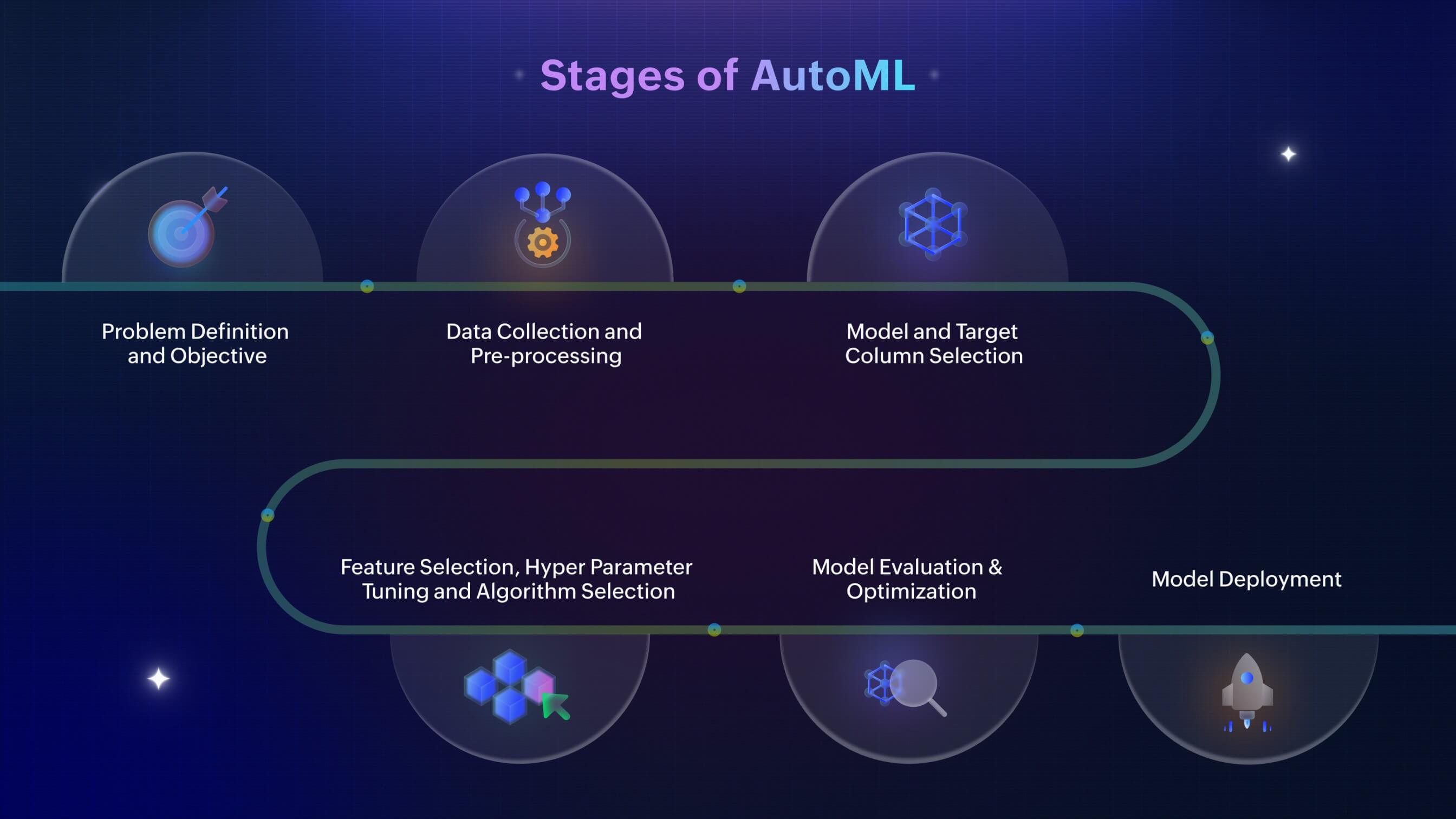
1. Problem Definition and Objective
Customer churn leads to revenue loss and increased acquisition costs. Businesses often lack early indicators of churn behavior, making it difficult to intervene on time.
Defining churn for your business is the first and most important step in building an ML model. This includes questions like: when should a customer be classified as churned? The definition of churn is subjective to each business and industry, its operational workflow and architecture.
- Subscription-based services: Churn could mean a customer canceling or not renewing their plan.
- Retail industry: It might refer to a decline in repeat purchases or reduced buying frequency.
- SaaS businesses: It often indicates prolonged inactivity or discontinued product usage.
Clearly defining what churn means helps your model focus on the right customer behaviors, use relevant data, and measure success accurately, forming the foundation for an effective churn prediction system.
For this solution, we’re using a sample SaaS dataset to demonstrate the churn prediction process.
2. Data Collection and Preprocessing
Any ML model is only as good as the data behind it. Data collection and processing is one of the most important stages as the success of any machine learning model relies heavily on the quality of the data used. To understand why customers leave and to accurately predict who is at risk, businesses need to collect and analyze data from multiple touchpoints.
Not just a SaaS environment, in any business model, customer data is siloed in different applications such as CRM, Billing, Desk and Product Usage Systems, each capturing different aspects of the customer journey.
Preparing the Data for Analysis
Zoho Analytics' visual pipeline builder fosters easy connection with many data sources and advanced transformation functions to get your data ready for analysis.
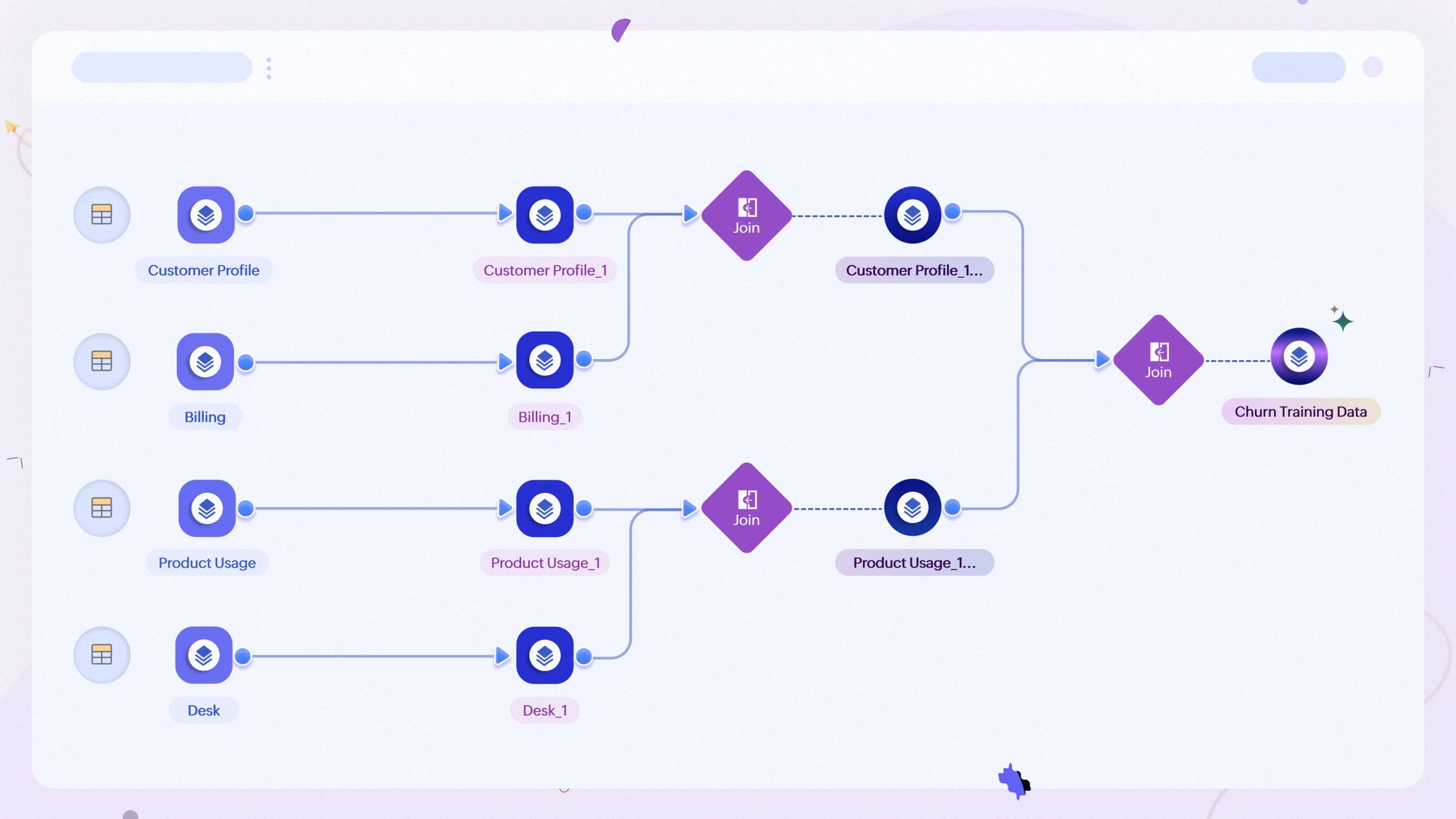
For this solution, we use a sample customer churn dataset representing a SaaS environment. It contains information about each customer’s churn status along with various customer-related attributes. The below table lists all the attributes (features) in the dataset that can be used for training the ML model.
| Category | Features |
| CRM | Subscription_Tier, Company_Size, Region, Subscription_Duration_Months, Customer_Age_Months, Renewal_Date |
| Billing | Payment_History_Score, Payment_Failures, Refund_Requests |
| Help Desk | CSAT_Score, NPS_Score, Ticket_Volume, Avg_Ticket_Resolution_Time_hrs, Ticket_Severity_Level, Support_Engagement_Level, Avg_Response_Time_hrs, First_Contact_Resolution_Rate, Sentiment_Score, Ticket_Submit_Freq_Last_90_Days, Unresolved_Tickets |
| Product Usage | Login_Count_Last_90_Days, Ticket_Submit_Frequency_Last_90_Days, Unresolved_Tickets, Product_Monthly_Usage_Hours, Feature_Adoption_Score |
3. Get Predictive - Building an ML Model
Now that your dataset is ready, you can begin building a Classification model to predict customer churn. This involves selecting the right algorithm, configuring hyper parameter settings, and preparing the model for training.
Model and Target column Selection
Access the AutoML builder in Zoho Analytics and choose the Prediction Model, as the objective is to predict a binary outcome, whether a customer is likely to churn or not.
The training table is a dataset that contains historical customer information and other relevant features, such as usage frequency, engagement level, and subscription details. From this table, select the target column that indicates whether a customer has churned.
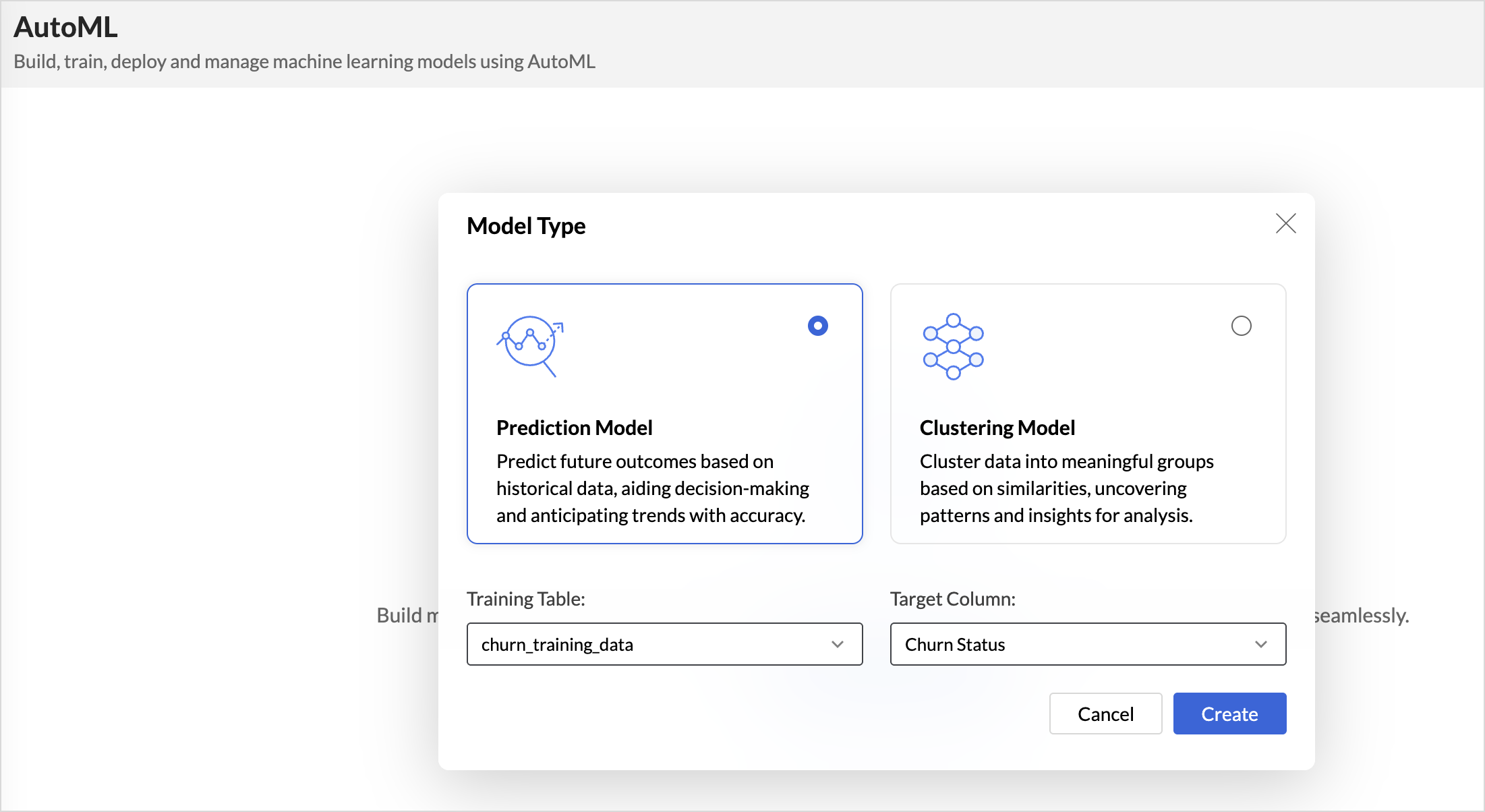
Note
|
Feature Selection, Hyper parameter Tuning and Algorithm Selection
Feature selection is the process of identifying the features or factors that contribute the most accurate predictions. It Improves the quality of the model and makes it more efficient. Noisy or redundant data makes it more difficult to discover meaningful patterns.
Zoho Analytics AutoML engine precisely recommends the necessary features and algorithms for training the data based on the target column. It automatically detects and excludes unique identifiers that do not affect the target column prediction. This ensures the model focuses on relevant data, improving both efficiency and accuracy during training.
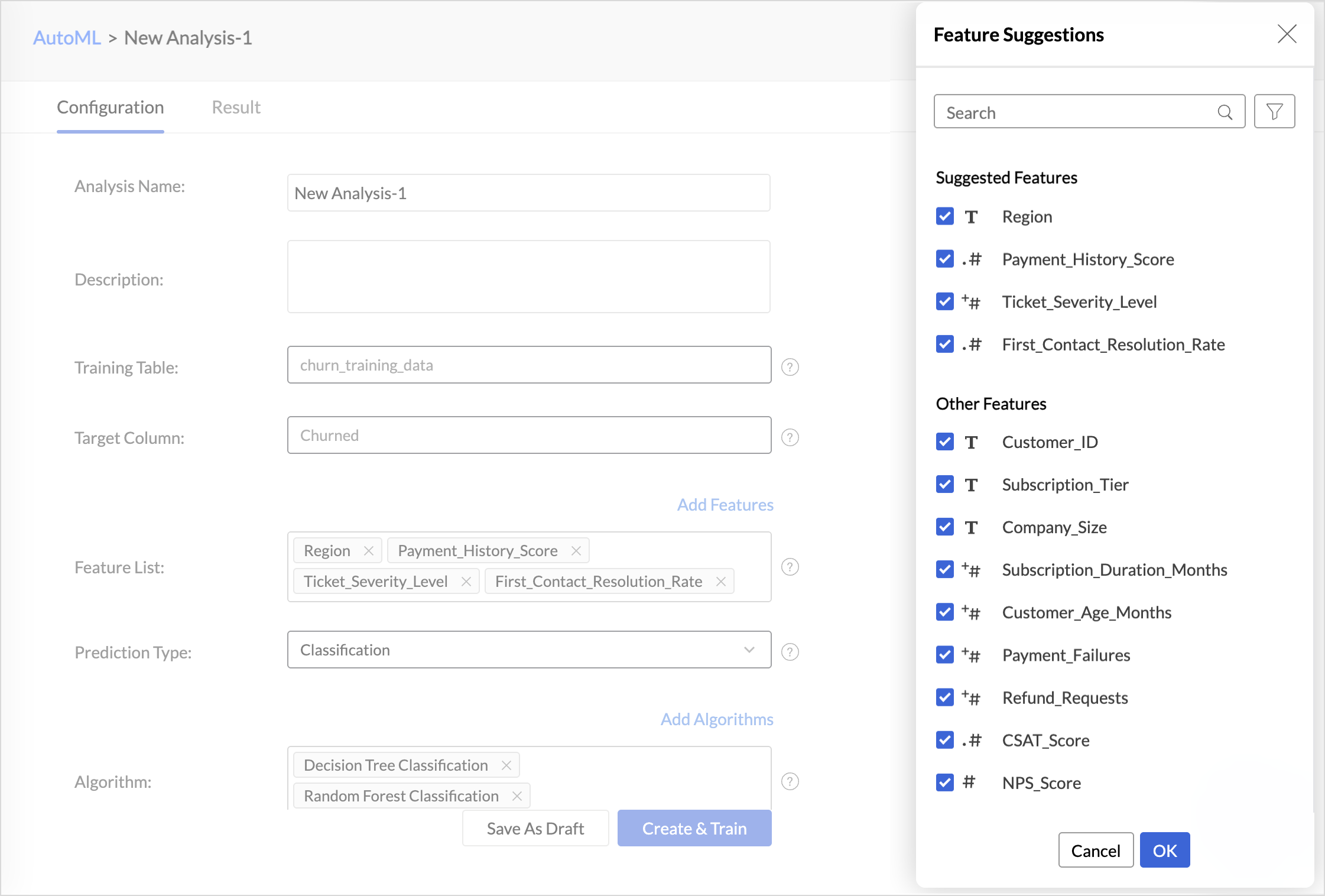
Evaluating Model Performance
Model evaluation helps understand how well your model is performing and how effectively it can predict outcomes on new or unseen data. Once training is complete, the Model Score along with other essential metrics such as Precision, Recall, Accuracy, Hamming Loss and Lift Score are provided to assess performance.

A confusion matrix is another key evaluation tool for classification models. It breaks down the number of true positives, true negatives, false positives, and false negatives, helping you understand where the model is performing well and where it may need improvement. These metrics determine whether the model is ready for deployment or if it requires further tuning and retraining.
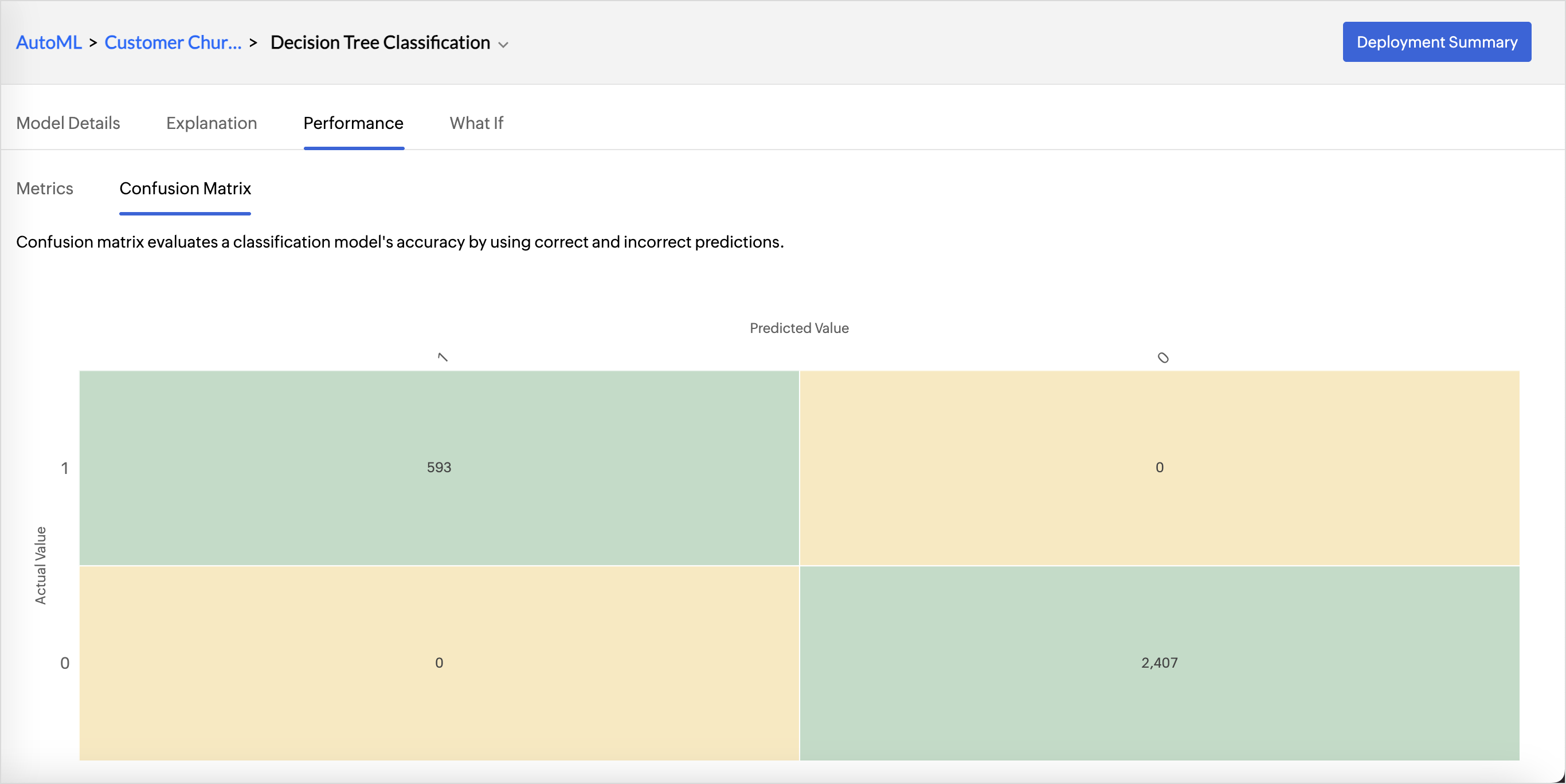
Deploying the ML Model
Once the model’s performance has been evaluated, select the best-performing algorithm for deployment based on the Model Score. The model can be scheduled to run at regular intervals ensuring predictions stay current as new customer information becomes available.
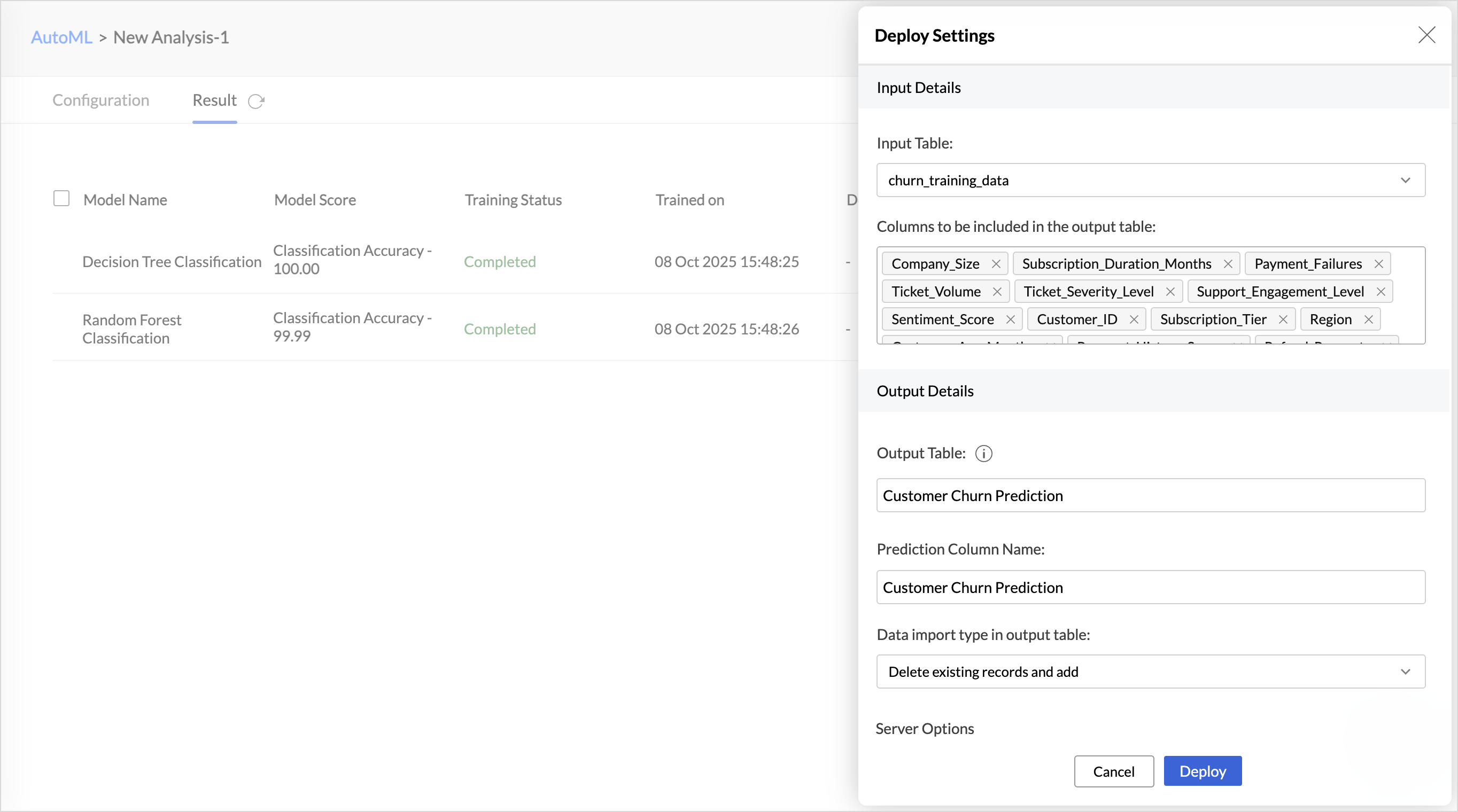
4. Build Visualizations
Once the model is deployed, you can build a Customer Churn Prediction Dashboard to visualize machine learning predictions. This dashboard helps you see who is likely to churn, why, and where to focus retention efforts.
It provides a complete view of customer health by visualizing churn distribution, regional patterns, and behavioral indicators turning predictive data into actionable business insights.
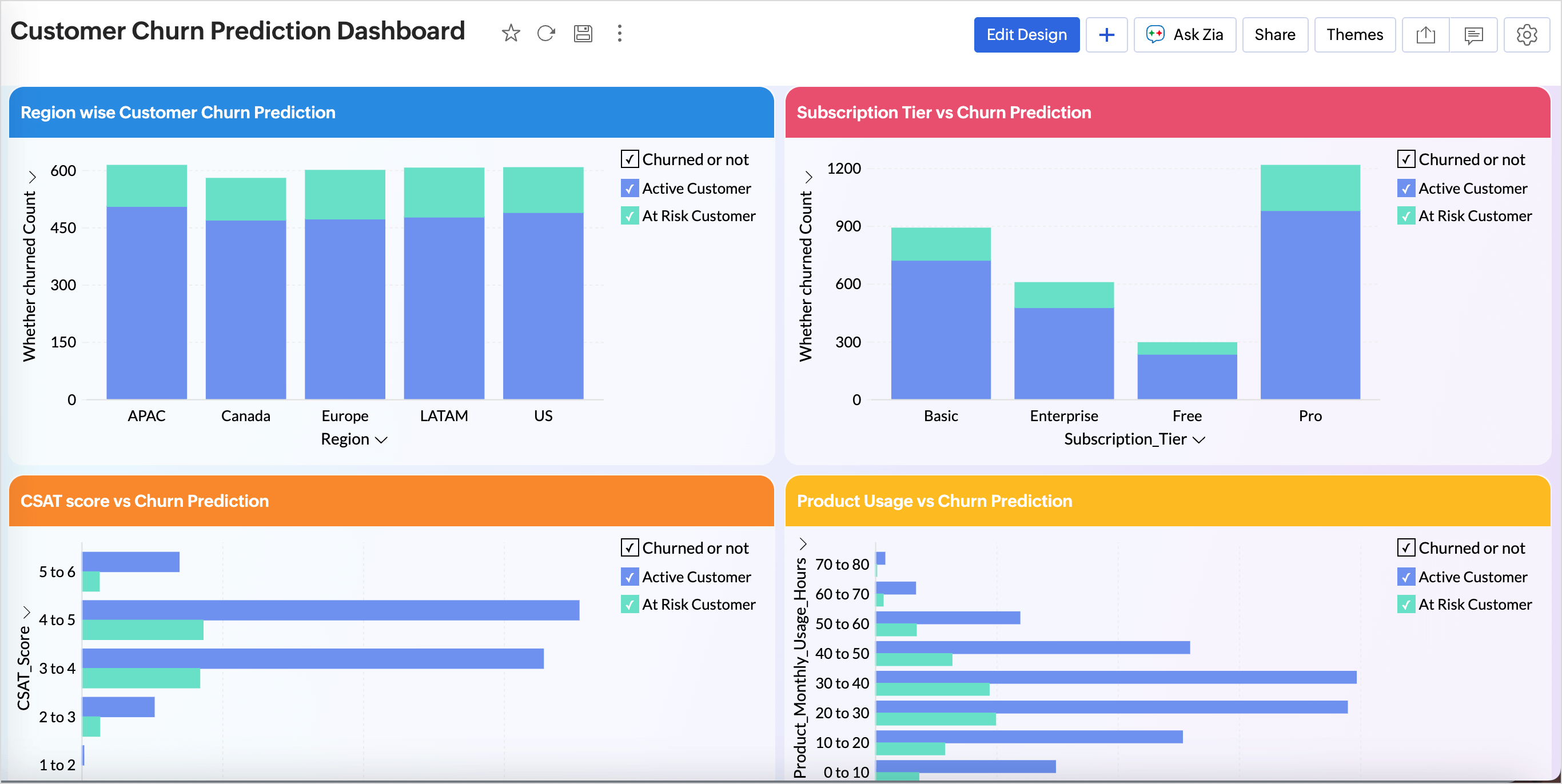
5. Take Proactive Measures
A churn prediction model doesn’t just identify at-risk customers, it empowers teams to act before it’s too late. By collaborating with different teams such as marketing, sales, and customer success, businesses can design targeted retention strategies.
For instance, they can deliver personalized campaigns, group customers by risk level or behavior for more relevant engagement, and identify opportunities for upsell and loyalty programs to reinforce value for those at risk.
6. Iterate the ML model
Business requirements are constantly evolving. Machine learning models trained on outdated data lead to inaccurate insights and poor decisions. Retraining ML models helps adapt to new data patterns, reduce errors, eliminate data drift, improve model performance, and make them suitable for current business objectives.
Get Started with Churn Prediction in Zoho Analytics
Connect your business data and turn churn challenges into growth opportunities. AutoML capablility is available on the Enterprise plan.
To explore how Zoho Analytics can work for your business, start your 15-day free trial or book a personalized demo.
15-day free trial. No credit card required.